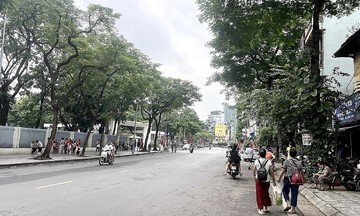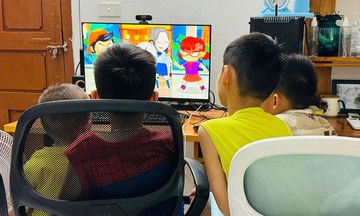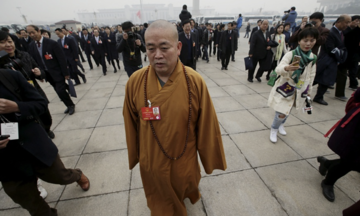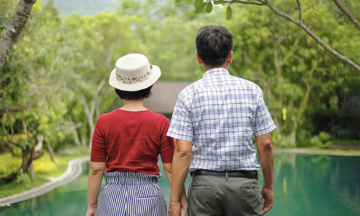The maritime accident quickly became a focal point of public discussion. On social media, expressions of grief mixed with accusations. Many questioned, "Why go on a trip when a storm was forecast?", "Knowing the danger, why did they still go out to sea?". Others urged people to "stop judging," "let them rest in peace," and shared images of clear skies before the sudden storm, seemingly to defend the deceased.
A woman who lost 6 relatives in the tragedy pleaded with people to stop blaming the victims. 8 of her family members were on the ill-fated boat; 6 did not return. Her mother and younger brother survived.
"Not just my family, but all the relatives of the victims on that boat are in great pain, so please be empathetic and refrain from criticizing. This unfortunate accident happened to no one's wishes, so please stop blaming them," she wrote.
The post attracted 650,000 views and thousands of comments.
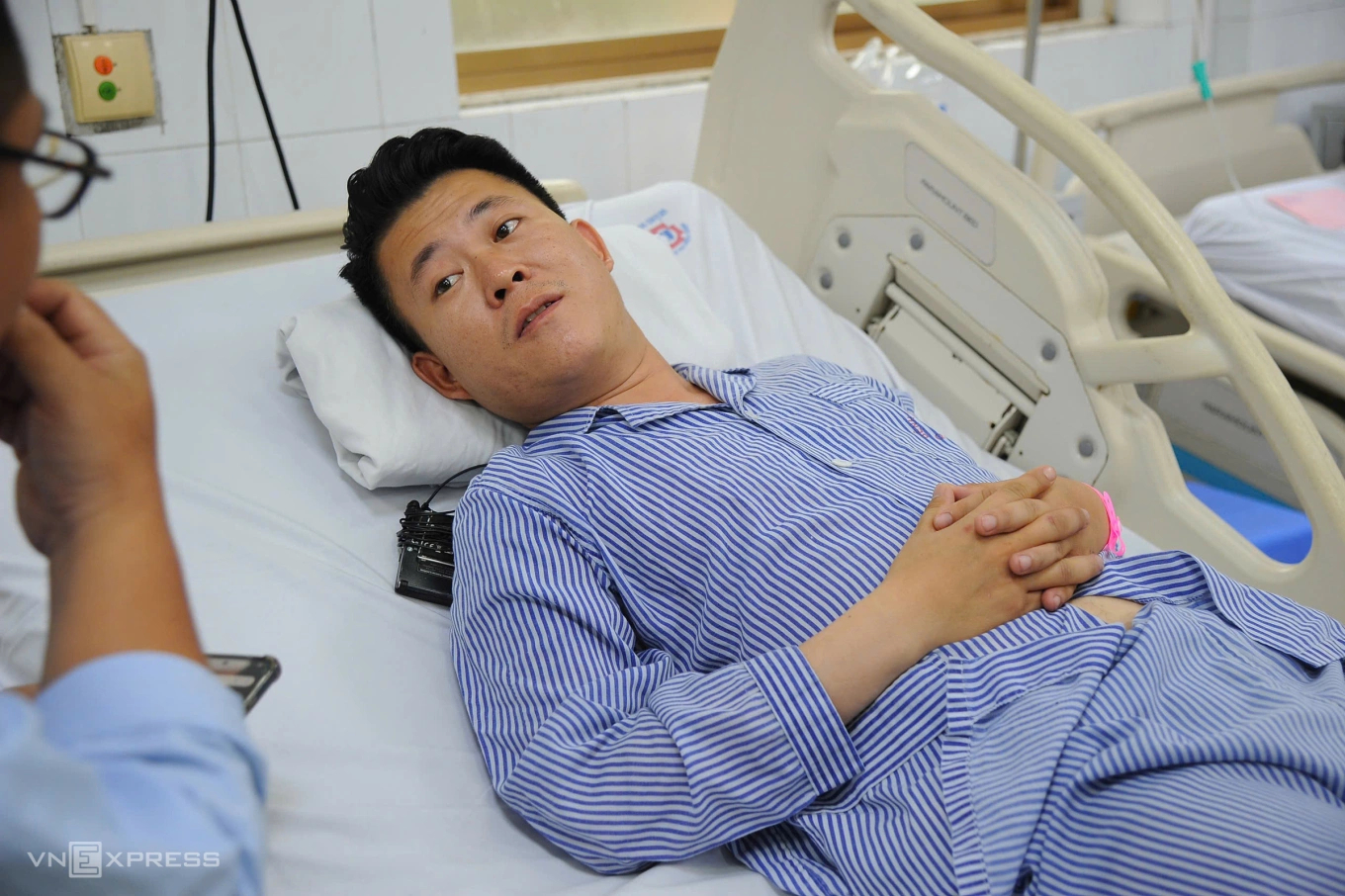 |
Dang Anh Tuan is currently being treated at Quang Ninh Provincial General Hospital. Photo: Duy Anh |
Dang Anh Tuan is currently being treated at Quang Ninh Provincial General Hospital. Photo: Duy Anh
Amid the widespread victim blaming, Dr. Nguyen Ngoc Huy, an expert in weather research and extreme weather warnings, published an article titled "The victims are not to blame" on his personal page.
In the article, he addressed several questions raised by the public: Why go to sea before a storm? Why weren't boats prohibited? Why weren't life jackets worn? And why wasn't the squall predicted earlier?
Regarding the first question, the tourists left the port around noon. At that time, it was sunny with no signs of rain or wind. Weather reports also stated that Typhoon Wipha would enter the Gulf of Tonkin on 21/7. Therefore, the victims cannot be blamed for going on a trip while a storm was approaching.
The decision not to prohibit boats was not due to negligence. Official reports that morning indicated light winds, level 2-3. At 1:30 p.m., an updated report noted "heavy rain and thunderstorms possible." By then, Vinh Xanh 58 had already left, and the port had stopped other boats from departing.
Following international practice, a ban on sea travel is typically issued about 24 hours before a storm makes landfall to allow vessels to reach safe anchorages. Since Typhoon Wipha was not expected to enter the Gulf of Tonkin until 21/7, a ban could not be issued on 19/7 without evidence of extreme weather.
As for why passengers weren't wearing life jackets, rescue forces reported that 80-90% of the victims were found wearing them. This suggests the captain had issued a safety order. However, wearing a life jacket in an enclosed cabin makes it nearly impossible to maneuver and escape. If passengers didn't go on deck or open windows, the life jackets could have become obstacles.
Huy speculated that heavy rain and strong winds likely caused all doors and windows to be closed. This prevented passengers from escaping when the boat capsized.
Addressing the final question, "Why wasn't the squall predicted?", Huy explained that neither GFS (US) nor ECMWF (Europe), the two most powerful forecasting models, predicted a squall in Ha Long Bay between noon and 2 p.m. on 19/7. Satellite and radar imagery detected the thundercloud cluster around 2 p.m.—real-time imagery, meaning the squall had already formed.
"The squall on the afternoon of 19/7 was a rare supercell thunderstorm. The Ha Long boat capsizing was an unusual incident and may have involved a waterspout. Even modern boats and experienced captains cannot handle waterspouts," said the weather expert with over 20 years of experience.
Facing accusations before their grief has subsided is not just an aftermath of this boat accident. It's a familiar pattern in society: instead of examining root causes, we blame the victims. Many seem to believe that if someone suffers misfortune, they must have done something wrong.
"Victim blaming is common in stories of sexual assault and gender-based violence. But this boat accident highlights how victims in many other situations can also be targeted. This phenomenon must be seriously considered," said psychologist Nguyen Van Anh, founder of the Center for Studies and Applied Sciences in Gender, Family, Women and Adolescents (Csaga).
Victim blaming occurs when victims of crimes, tragedies, or natural disasters are held responsible for what happened to them. According to psychology professor Sherry Hamby (founder of the journal Psychology of Violence), belief in a "just world" leads many to blame victims to preserve their own sense of security, even if it deprives victims of much-needed empathy.
Psychological biases like the "fundamental attribution error" and "hindsight bias," along with a lack of empathy, contribute to ignoring objective circumstances and blaming victims.
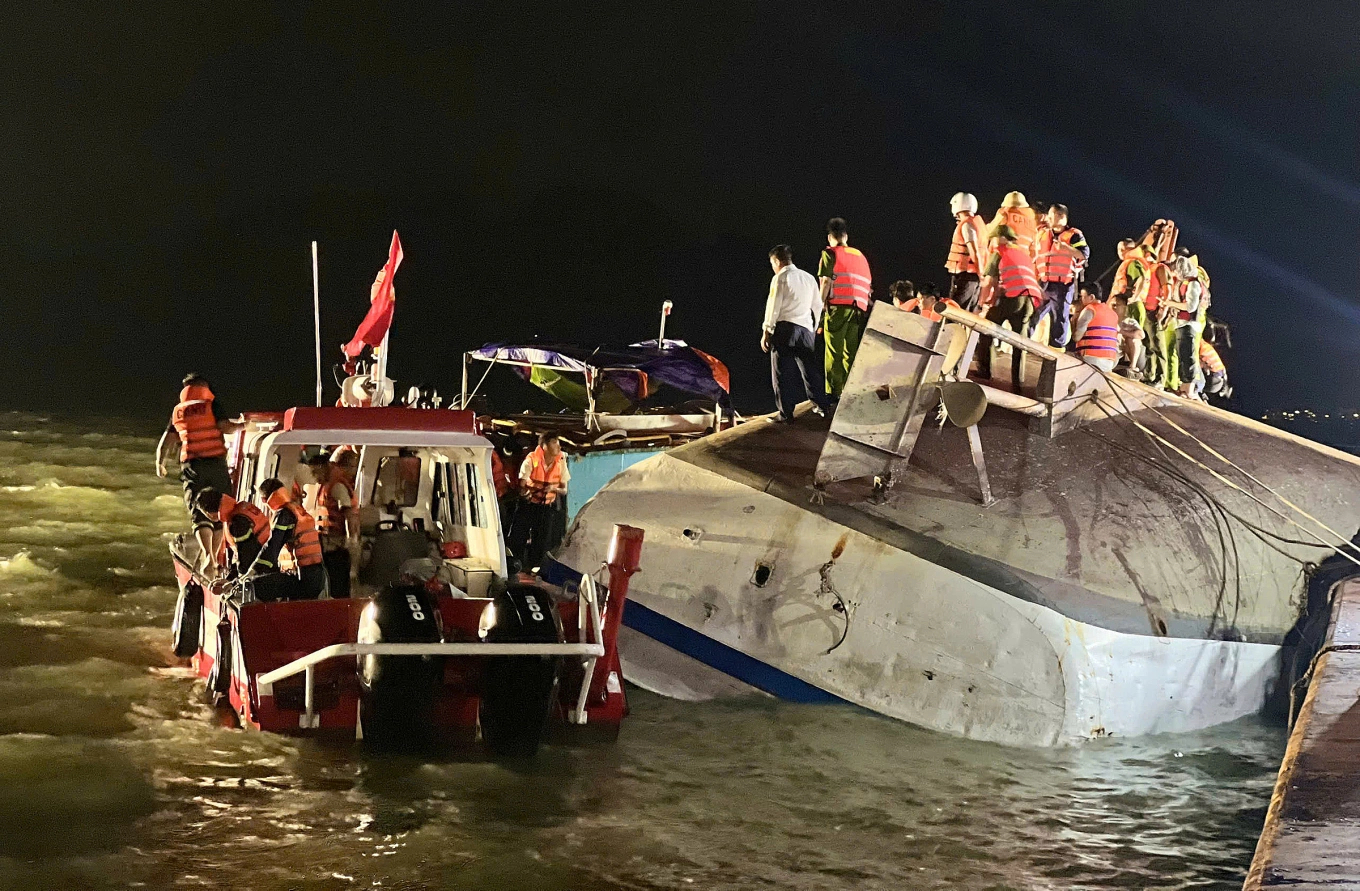 |
Authorities bring the Vinh Xanh 58 closer to shore and right it in the early morning of 20/7. Photo: Hoang Phong |
Authorities bring the Vinh Xanh 58 closer to shore and right it in the early morning of 20/7. Photo: Hoang Phong
As an organization protecting women and girls from violence and abuse, Van Anh stated that most victims are blamed. This is so prevalent that Csaga has implemented a program to address victim blaming, particularly gender-based victim blaming. When assault or violence occurs, people often assume the victim must have done something wrong to be beaten or raped. They are often asked, "Why weren't others targeted, but you were?". They are often accused of being "talkative," "provocative," "staying out late," or needing to "look at themselves."
This fear of blame silences victims. In the age of social media, these attacks become even more severe.
"Blame is like a squall in the human heart, unseen on any radar, yet capable of devastating the faith, dignity, and recovery of victims and their families," said the psychologist.
Instead of blaming, we need to act differently. If someone doesn't know how to swim, teach them. If you have boating skills, share them. If you're worried others might underestimate the weather, share your knowledge.
Whether it's an escape tip, a warning message, or a gesture of empathy, it's far more valuable than criticism and blame, especially when directed at vulnerable individuals who no longer have the opportunity to explain or defend themselves.
"If you can't help, be silent. If you must speak, make sure your words help others stand up, not fall again," said Nguyen Van Anh.
Phan Duong



